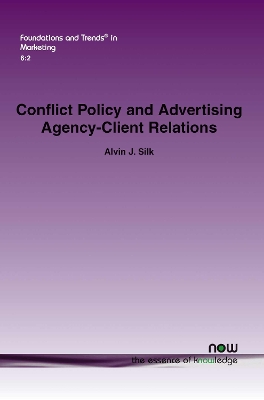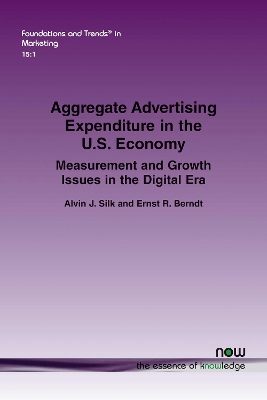Foundations and Trends (R) in Marketing
2 total works
Despite its history as a contentious issue in agency-client relations, conflicts of interest remain a relatively undeveloped topic in both the professional and academic literature on advertising and marketing. As a step toward the development of a deeper understanding of the state of contemporary practices relating to conflict norms, Conflict Policy and Advertising Agency-Client Relations surveys and integrates three somewhat disparate bodies of relevant material that are available. First, an examination of the history of the advertising industry in the U.S. and Japan serves to inform our understanding of the development and functioning of the principal contending policy options: the exclusivity norm and the "split account system," respectively. Second, analysis of press accounts of specific conflicts and policy guidelines issued by trade associations illustrates how the re-structuring the U.S. advertising industry over the past three decades has affected potential threats of conflicts and means for addressing them. Third, a handful of theoretical and empirical studies are available that offer valuable insights into the issues and controversies surrounding conflicts that have been raised in the trade literature. After the introduction, Section 2 outlines a conceptual framework for analyzing the antecedents and consequences of conflicts of interest encountered by professional service firms and discuss the role of safeguards in addressing threats of security breaches. Section 3 traces the evolution of the exclusivity norm in the U.S. and the split account system in Japan. Section 4 examines the use of safeguard and contractual provisions in limiting agency-client conflicts. Section 5 presents a typology of conflicts and policy guidelines issued by trade associations, followed by an analysis of a hybrid family of conflict policies that has emerged to accommodate the interests of holding companies and their large diversified, global corporate clients. The resolution of conflict disputes is also discussed. Section 6 reviews the limited body of analytical and empirical research available on the economics of conflict policies. Section 7 considers directions and opportunities for further research. Section 8 provides an overview of the current state of knowledge about alternative conflict policies followed in practice, the economic rationale underlying their use, and the effects conflict policy has on the industry's efficiency and organization.
Aggregate Advertising Expenditure in the U.S. Economy
by Alvin J Silk and Ernst R Berndt
Published 2 September 2021
Aggregate Advertising Expenditure in the U.S. Economy provides evidence that over the period 2000 through 2018 nominal aggregate advertising spending in the U.S. as a share of nominal GDP has been falling. The elasticity of advertising with respect to nominal GDP appears to have increased substantially since the late 1990s. The authors further show that nominal aggregate advertising spending has become more responsive to changes in real GDP and GDP price inflation. Finally, the monograph considers the implications of ongoing developments in the management of advertising campaigns and pending public policy issues surrounding controversial digital advertising practices for how advertising’s macroeconomic role may evolve in the future. The authors stress the development of media-specific and aggregate media mix prices indices as being the critical next step in advancing understanding of the sensitivity of aggregate spending on advertising to cyclical and secular shifts in total economic activity and the components thereof. Following a short introduction, section II provides some historical background on the twin problems of defining advertising in the face of its ever-changing boundaries and measuring its output as a service industry. Section III sketches the vertical structure of the U.S. advertising industry and describes the set of four time series assembled that measure nominal aggregate advertising spending by advertisers and the related revenues of two sectors who function as service providers to advertisers -- advertising agencies and media firms. Section IV reviews the media price indices available from private sector sources and the BLS. Section V presents the double log constant elasticity model that serves as the conceptual framework underlying the analysis of the relationship of nominal aggregate adverting spending to GDP. Section VI reports extensive analyses of autocorrelation and partial autocorrelation coefficients calculated in order to assess whether the measures of nominal advertising spending exhibit stationarity and guide our choice of the order of moving average autoregressive function specifications. Section VII presents the results indicating that a structural shift in the sensitivity of nominal aggregate advertising to GDP occurred around the turn of the century when, in nominal terms, aggregate ad spending became more responsive to not only changes in nominal GDP but also to changes in real GDP and to changes in GDP inflation. Section VIII discusses implications of changes in the management of advertising campaigns accompanying the ascendancy of digital media and the resolution of public policy issues surrounding digital advertising practices. Section IX summarizes the main conclusions.

